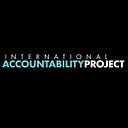In Panama, Pursue Project Designs that Uphold Human Rights
By Bernardino Morales Tera
Bernardino Morales Tera is a youth activist and leader from the Ngäbe indigenous group in Panama. He is a member of the Global Advocacy Team, an 8-person group convened by the International Accountability Project, to conduct local research on development and make recommendations to improve World Bank policy on development finance. The Global Advocacy Team’s final report from 8 countries will be released in 2015.
I am from the Ngäbe indigenous people of the Bocas del Toro region of Panama. I will never forget the day — May 22, 2011, when the floodwaters from the dam rose and covered my family’s home and my people’s lands. We lost so much when our lands were flooded. We know that there are many alternative ways to produce energy that would not break the lives and hearts of so many people, as happened in our Ngäbe communities. That is why we are fighting for both our own compensation and to change the energy plans of the Panamanian government, which currently proposes to construct over 80 large hydropower dam projects by 2016.
The dam that displaced my people is called the Chan 75 hydropower dam. This 220-megawatt dam was built on the Changuinola River in Bocas del Toro, a province that borders Costa Rica. The dam was completed in 2011 and created a 14-kilometer reservoir, displacing 1,000 indigenous Ngäbe and inundating many acres of rainforest, fertile land, and sacred places. The dam is located within the La Amistad Biosphere Reserve, shared by Panama and Costa Rica.
To understand how my community was affected, as part of IAP’s Global Advocacy Team initiative, I formed a research team composed of five members, each from a different village that was displaced by the Chan 75 dam. We conducted surveys in our indigenous language and translated the data into Spanish. We had to travel far, including by foot and boat, to survey community members. Everyone in our community has a story that shows that we were never consulted about the project. Our stories also show the human rights abuses that so many people suffered. One story that is typical is from Luis, a young man about 26 years old, from the community Charco la Pava:
“My brother Francisco was working in his fields when police entered and remained 24 hours a day in his fields and around his home. At night, they intimidated him, his family and his neighbors. They went door to door to each family, to try to intimidate them to agree to the project.
Some people continued to say no, like my neighbor, Señora Juana. She refused to leave her house, until one day the police set fire to her home and began dismantling it with a chainsaw while she was in it. She had to run out of her house and she lost everything she had in the fire and destruction. The company has continued to deny that they were responsible for this, and no one has compensated Señora Juana for anything.”
There was heavy police presence in our villages before and during eviction. Company representatives and police threatened to flood out people if they did not agree to accept resettlement. Police violence erupted when communities expressed opposition to the project. The company also began construction very close to homes without warning. When asked about how the displacement occurred, one young man commented:
“They did everything they could to make people feel scared, because they knew that is the only way they could make us move. None of us agreed with the project.”
Since 2009, we have been trying to negotiate for fair compensation. We have made a very clear proposal and demand to project developers based on our ideas of what kind of compensation would provide some basic justice and would help us rebuild our lives.
The experience of our people demonstrates urgent problems with consultation and compensation. Many foreign actors, including the World Bank, helped create the conditions that led to our forced eviction. When the World Bank’s Land Administration Project failed to formalize our ancestral land rights, we were left vulnerable to pressure from private companies and government to take our lands and dam our rivers. Because the government is not listening to us, we have brought complaints to international bodies, such as the Inter-American Court of Human Rights.
Our communities want to have a voice in Panama’s development process. Right now, many large-scale energy and infrastructure projects are being planned that will directly impact indigenous lands, such as hydropower, wind power, and road projects. Many of the people we interviewed emphasized the importance of providing indigenous peoples with a seat at the table in Panama’s national development planning. We want to have a voice before the government decides to locate hydropower projects in our river basins, especially when other energy alternatives might be available that would not violate anyone’s fundamental human rights.
Given the severe human rights consequences of large hydropower plants on indigenous lands, we see that there is an urgent need for the Panamanian government and its development partners to engage indigenous peoples and others in designing energy plans that will protect all citizens’ human rights.
There are many ways through which Panama could have generated large quantities of electricity without constructing mega-dams in ancestral indigenous territories. The selection of project plans and national development priorities must be a broadly participatory process, in which citizens — especially groups such as indigenous peoples, who have faced historical and ongoing barriers to having their voices heard — are a central part of the consultation and decision-making process. This is how we can choose development projects that protect all people’s human rights.
